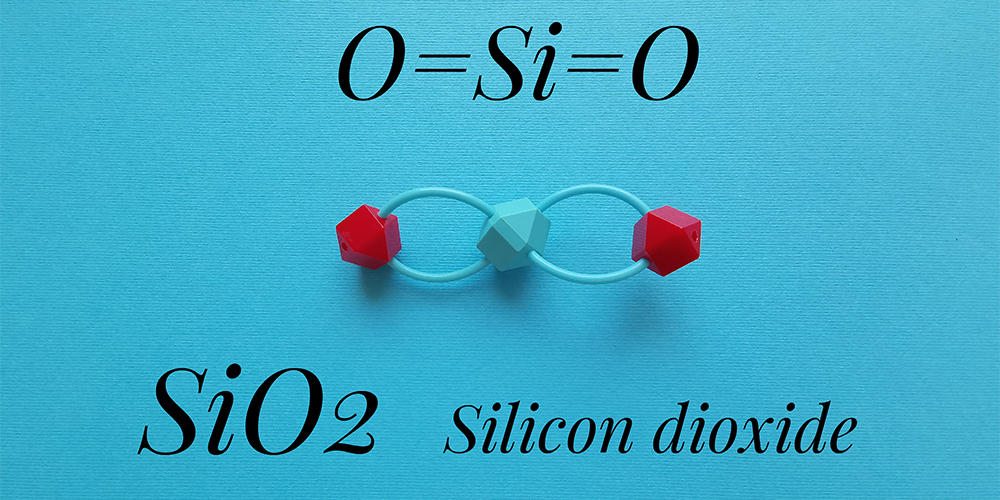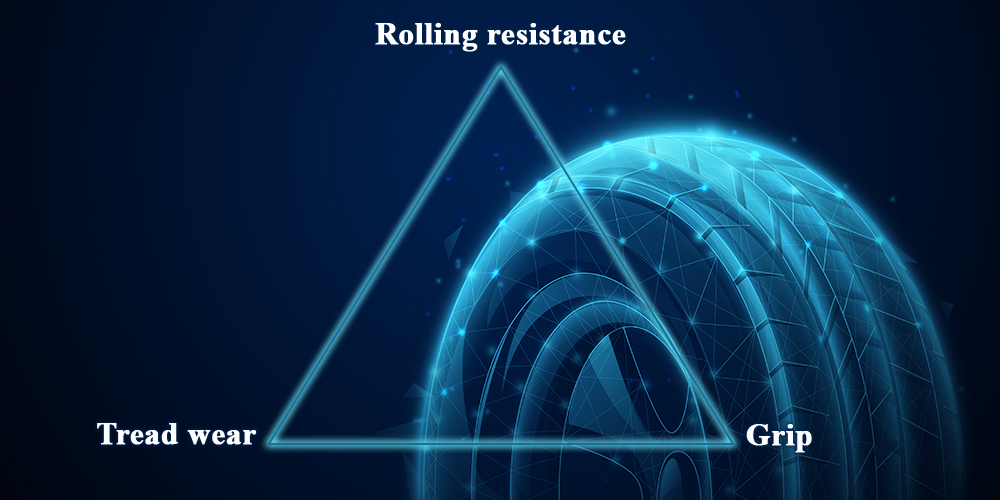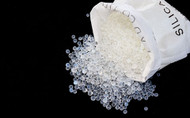Why is Silica Used in Tires?
Posted by Agota Szabo on Mar 16th 2022
In order to make winter tires grip the snow and ice well, you need more than just a tread design. Many different methods have emerged in the tire industry throughout the several hundred years - after the creation of the first snow tread.
Slowly, tire manufacturers came to the realization that a higher void ratio and a high number of tread blocks both enhance traction. They also recognized the importance of the zigzag pattern. Such tire technology ensures a high number of biting edges which come in handy in winter conditions.
But the farther they went with their experiments, the more obvious it became that something was missing.
The tire tread was still lacking in stickiness. It wasn't until they figured out, through the wonders of chemistry, that maybe mixing rubber and silica is a good idea.
What is Silica?
Michelin was the first to produce a tire model featuring silica as a filler in the 1990s. Since they introduced their Green Tires series, almost every other manufacturer picked up this method.
The tire's silica content enables it to seamlessly establish traction with the road surface, even in harsh weather conditions. But what exactly is it?
Silica, or Silicon Dioxide (SiO2), is a very common element that can be found all around us in the Earth's crust. It comes in various forms, including quartz, coesite, tridymite, and cristobalite, just to mention a few, but you probably know it best as sand.

However, it's not only used by tire manufacturers. It's widely used for preparing cement, mortar, concrete, and sandstone as well. Certain industries use it for polishing glass and stone. Others use it for raw material for molding and gemstones, and it's a decent moisture remover too.
Our Earth is abundant in silica and it mainly comes in the form of quartz. This best-known filler can be found all around us, as sand contains it in huge amounts. Nowadays, about 95% of the tire manufacturing process uses it as a crucial ingredient.
What is a silica tire compound?
Mixing a few ingredients together makes the rubber compound. It is similar to cooking, where you need a few key ingredients in the right amount to end up with the final dish. In the tire-making process, the two most important ingredients are natural and synthetic rubber.
They also add fillers, which are usually silica and carbon black. The tire industry uses other chemical additives as well, such as oils and waxes. Manufacturer replacing the widely used carbon black with reacted silica creates a silica compound.
There are lots of different tire compounds in the industry, as everyone tries to find the optimum mixture of ingredients. A rubber compound can contain 30 to 40 ingredients and can change depending on whether it's made for the sidewalls, tread, belts, or casing.
Why do Tire Manufacturers Use Silica?
One of the reasons why tire makers use silica as a filler is to enhance the tire's resistance to cutting, chipping, and chunking. Back in the day, it was also discovered that silica improves two other key characteristics: it increases the tire's durability and reduces fuel consumption by lowering the rolling resistance. This means that the tire requires less energy to roll at the same speed, enabling your vehicle to run on less fuel.
Unfortunately, enhancing the compound with silica comes with its own trade-offs. Engineers discovered that when they combine silica with natural rubber compounds, they end up with a weaker tread. Although it successfully lowers the rolling resistance, it negatively affects wear resistance and abrasion. This is the reason why the compound mix has to be optimized, to produce a model with the desired balance of performance properties.
Silica as a Filler for Rubber Compounds
Silica is a filler in rubber compounds that has to be used in the right ratio. Making a single tire uses 12 to 15 different compounds and using the right proportion of each is not easy. For example, the sidewalls and the tread itself differ in the combination of rubber materials needed.
You can consider compounding as a complete branch of science that requires thorough research and testing. The big players in tire manufacturing invest a lot into finding out how much silica particular types of tires need. Of course, there are lots of other fillers and chemicals emerging as well, which makes compounding even more complex.
Are silica tires good?
Silica has enabled engineers to start manufacturing increasingly sophisticated tires for cars. They wanted to make their models stickier without losing much of the other benefits. First, there was only carbon black, which hardened the rubber blend and enhanced friction.
It kept the footprint from sliding and helped a lot with braking. The downside of it was that high friction increases fuel consumption. Later, they combined carbon black with silica, which was shown to greatly improve quality.
These tires are not only good but they provided a solution to numerous problems faced by manufacturers at the time. Now it's a key ingredient for almost all models made in the industry. This is due to it providing significantly improved tire characteristics compared to carbon black based tires.
How does Silica Work?
In the manufacturing process of most winter- and all season touring tires, engineers add silica to the compound. It is one of the fillers used in the tire tread that does several things. On a molecular level, it stimulates the molecules to adhere to each other. It also enables tires to be more adaptive to temperature changes, maintaining their flexibility and reducing rolling resistance.
The benefits that silica offers are undeniable, and it's easy to produce and shape. Manufacturers have saved more than 5 billion gallons of oil so far by making tires eco-friendly. It's a widely popular material and can also be combined with many other products in the foundry, glass, and ceramics industries. It is a great insulating material and also provides heat resistance. Simply put, silica is an elastomer that excels in many extreme environments.
Rubber Compound that Helps Traction
Before the industry's wide silica use, it was not so obvious how to improve grip and reduce rolling resistance at the same time. Tire engineers knew two things:
- A soft compound results in better grip, although it accelerates tread wear and increases rolling resistance.
- A hard compound ensures a lower rolling resistance and wears slower, although its gripping ability is not so good.
These three properties-rolling resistance, tread wear, and grip-are the "Magic Triangle" in tire making. Engineershese had to balance these, always considering the aforementioned tradeoffs when designing tires.

As they started using silica, they discovered that it doesn't have to work that way. They have finally found a material that improved both the tire's ability to create friction while ensuring rolling resistance reduction. Meanwhile, the tread wear rate is also kept constant.
Discovering this "magic compound", made the refutal of the magic triangle theory easy. Brands became able to create tires that save fuel and require less energy to roll, without degrading handling.
Winter Tire
Snow tires feature big, chunky blocks, and a high number of zigzag sipes for better winter tire grip. However, the tread design is only one part of the equation. The other part involves chemistry, which focuses on the compound.
Combining carbon black with silica, the tread becomes a bit softer. This decreases its rolling resistance, resulting in lower fuel consumption. In addition, it allows you to drive in temperatures that are beyond freezing, as the tread remains pliable throughout the performance.
Also, the thing about ice is that, even though we imagine it as perfectly smooth, it really has tiny imperfections. Silica provides the flexibility needed to get a better grip on snow and ice-covered surfaces while you ride. It ensures that both all season and winter tires can dominate the asphalt in winter weather conditions.

Wet Grip
Silica ensures a solid grip for wet weather conditions as well. This makes it an ideal choice as a filler for all season tires. With the additional stickiness, the tread prevents side-slipping and guarantees consistent wet grip and handling, even in rain.
Using silica in the compound can improve wet traction by up to 15%, while also not sacrificing other important properties. Since it also enhances braking by a significant degree, you can expect a much shorter braking distance even on a rainy day.
Tread Durability for a Longer Tread Life
With the combination of carbon black and other fillers, silica can even make tires wear longer while not sacrificing performance. This allows manufacturers to produce tires at lower prices that boast a 70-80,000 mile warranty when new.
The silica technology makes the tread softer, yet it strengthens it against tread wear and irregular wear formations as well.
Reduce Fuel Consumption
The tire's ability to deform and rebound under the driving pressure is what defines its rolling resistance. This dynamic is called low-frequency distortion. A silica-based model has low hysteresis, which means that it returns low energy when rebounding from a deformation.

Fuel economy really depends on how much energy is required to rebound from a deformation. This is also the reason why the first tires made with silica are called green tires. A vehicle that runs such tires benefits from a reduction in rolling resistance of 20%.
















